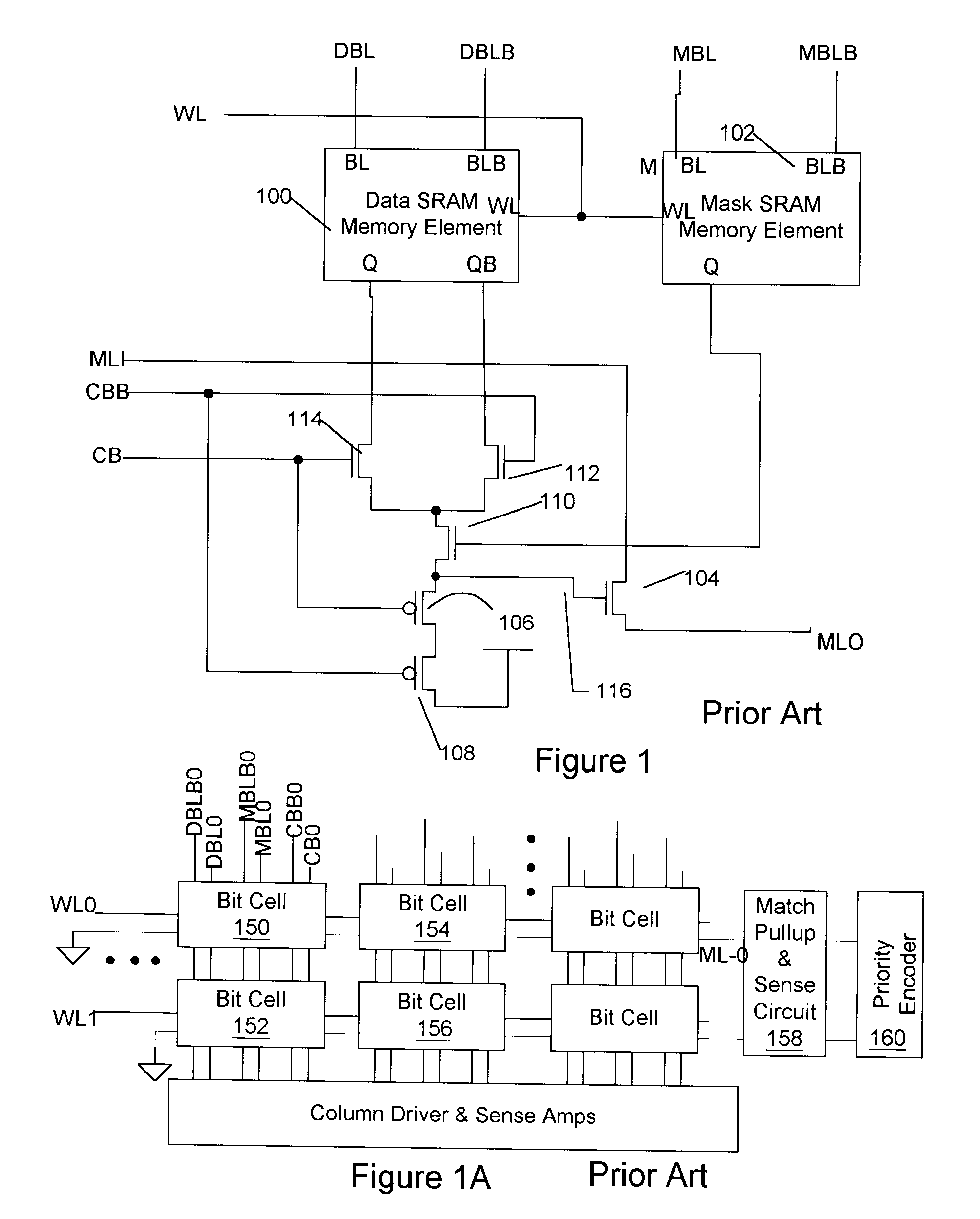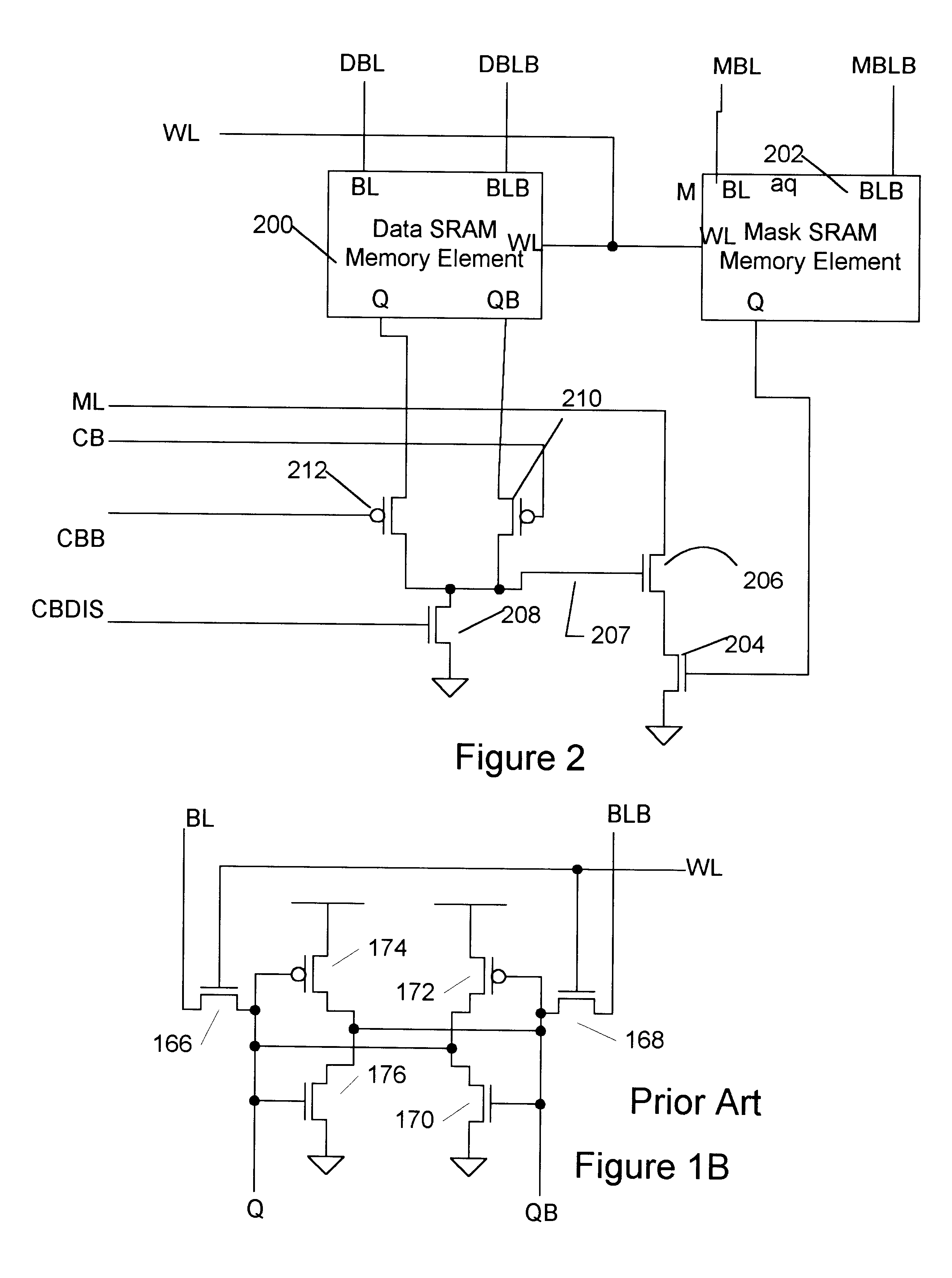Content Addressable Memory array, cell, and method using 5-transistor compare circuit and avoiding crowbar current
a technology of content addressable memory and compare circuit, applied in the field of digital integrated circuit, can solve the problems of consuming considerable power, consuming more space on an integrated circuit than may be desirable, and consuming considerable power
- Summary
- Abstract
- Description
- Claims
- Application Information
AI Technical Summary
Benefits of technology
Problems solved by technology
Method used
Image
Examples
Embodiment Construction
A ternary-CAM bit cell design as known in the art has a data static-random-access-memory (SRAM) element 100 (FIG. 1) and a mask SRAM element 102. SRAM elements 100 and 102 may be six transistor static RAM elements as known in the art and illustrated in FIG. 1B. Alternatively, SRAM elements 100 and 102 may be four-transistor-plus-two-resistor "poly load" static RAM elements as known in the art. A number of these bit cells are formed into an array, as depicted in FIG. 1A, having a plurality of rows and a plurality of columns. The data SRAM element 100 (FIG. 1) and mask SRAM element 102 have write enable inputs that are coupled to a write line WL common to several cells, such as WL0 common to cells 150 and 154, of a row. The data SRAM element 100 of each cell is coupled to data DBL and data complement DBLB input / output lines common to several cells of a column, such as DBL0 and DBLB0 common to cells 150 and 152. The mask SRAM element 102 is coupled to mask MBL and mask complement MBLB ...
PUM
 Login to View More
Login to View More Abstract
Description
Claims
Application Information
 Login to View More
Login to View More - R&D
- Intellectual Property
- Life Sciences
- Materials
- Tech Scout
- Unparalleled Data Quality
- Higher Quality Content
- 60% Fewer Hallucinations
Browse by: Latest US Patents, China's latest patents, Technical Efficacy Thesaurus, Application Domain, Technology Topic, Popular Technical Reports.
© 2025 PatSnap. All rights reserved.Legal|Privacy policy|Modern Slavery Act Transparency Statement|Sitemap|About US| Contact US: help@patsnap.com



